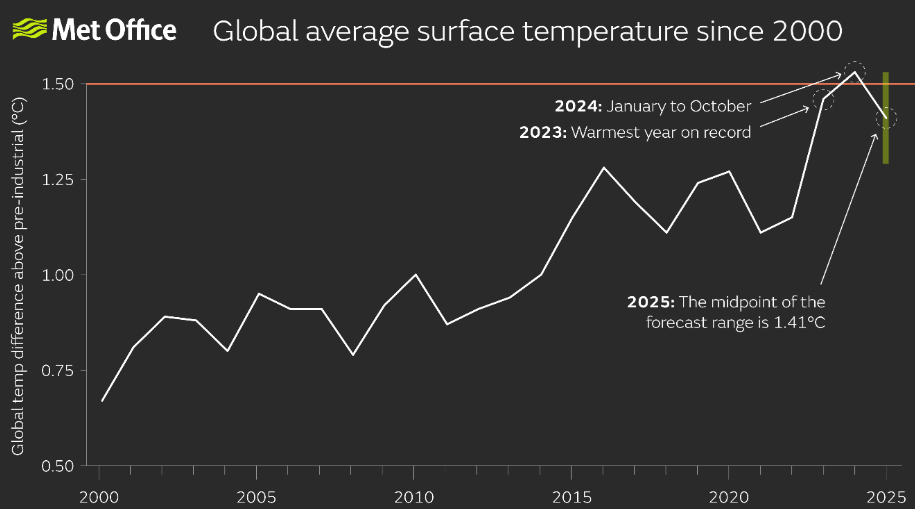A brief look at 2024 weather extremes; 1.5°C ceiling broken
|
from Heatmap News
|
|
Climate change meant that there were about 41 more “extreme heat” days in 2024, according to the World Weather Attribution’s annual extreme weather report. Climate change contributed to at least 3,700 deaths, but “it’s likely the total number of people killed in extreme weather events intensified by climate change [in 2024] is in the tens, or hundreds of thousands,” the group said. While the El Niño weather pattern contributed to global trends, climate change played a bigger role in fueling extreme weather. “As the planet warms, the influence of climate change increasingly overrides other natural phenomena affecting the weather,” the report added. |
 |
|
Image: World Weather Attribution |
|
China’s weather agency also reported that 2024 was the country’s warmest year on record, and that “the top four warmest years ever were the past four years, with all top 10 warmest years since 1961 occurring in the 21st century.” And a report from the National Institute for Space Research concluded that Brazil’s Amazon rainforest experienced 140,328 fires last year, the highest number in 17 years. In a New Year’s message, UN Secretary-General António Guterres said we are in an era of real-time climate breakdown. |
|
|
…And an early forecast for 2025 |
|
The UK’s Met Office projected that global temperatures will remain high in 2025 despite the shift to La Niña, averaging between 2.3 and 2.7 degrees Fahrenheit above the pre-industrial average. “Years such as 2025, which aren’t dominated by the warming influence of El Niño, should be cooler,” said Professor Adam Scaife, who leads the team behind the Met Office’s global forecast. “2016 was an El Niño year and at the time it was the warmest year on record for global temperature. In comparison to our forecast for 2025 though, 2016 is now looking decidedly cool.” |
 |
|
Image: Met Office |

